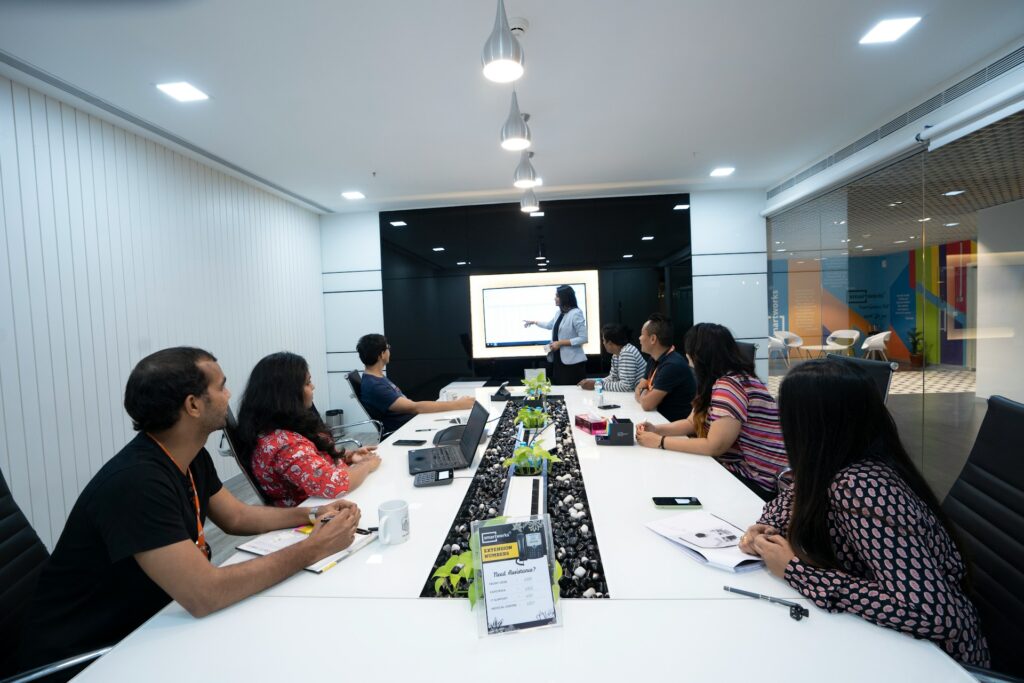In today’s global economy, software outsourcing to Asia has become a strategic approach for companies seeking to optimize resources while maintaining quality.
This comprehensive guide explores the advantages, challenges, top destinations, and best practices for successful outsourcing partnerships in the Asian region.
Related Post: Which Country is Among the Top Asia Offshore Locations for Outsourcing?
Related Post: 21 Best Offshore Development Companies in Asia
Straight from Tokyo
Advantages of Outsourcing to Asia
Cost Efficiency
Asia offers significant cost advantages compared to Western markets, with potential savings of 30-50% on development costs. This cost efficiency stems from lower living costs and salary expectations in many Asian countries while still maintaining high-quality output.
For example, hiring a senior developer in the United States might cost $120,000-150,000 annually, while equivalent talent in Asia might range from $30,000-70,000 depending on the specific country and experience level.
Access to Vast Talent Pools
The Asian region produces millions of STEM graduates annually, creating an enormous reservoir of technical talent. India alone graduates approximately 1.5 million engineering students each year, while China leads with over 4.7 million STEM graduates annually.
This abundance of skilled professionals allows companies to find specialists across various technologies, programming languages, and frameworks, often with shorter recruitment timeframes than in domestic markets.
Time Zone Advantages
The geographical positioning of Asian countries creates opportunities for “follow-the-sun” development models. When teams in North America or Europe end their workday, Asian teams can continue development, creating a near-continuous workflow cycle. This arrangement can accelerate project timelines, reduce time-to-market, and provide extended customer support coverage without requiring expensive night shifts in the home country.
Technological Infrastructure
Many Asian nations have invested heavily in digital infrastructure development. Countries like Singapore, Japan, and South Korea boast some of the world’s fastest internet speeds and most reliable telecommunications networks. Even developing economies like Vietnam and the Philippines have made significant strides in building robust technological foundations to support outsourcing operations, with dedicated IT parks and special economic zones.
Government Support
Several Asian governments actively support their IT sectors through favorable policies, tax incentives, and educational initiatives. For instance, India’s STPI (Software Technology Parks of India) scheme offers tax benefits to IT companies, while the Philippines provides various incentives through PEZA (Philippine Economic Zone Authority). These government-backed programs create stable environments for outsourcing partnerships.
Disadvantages of Outsourcing to Asia
Communication Challenges
Despite improving English proficiency across Asia, communication remains a significant challenge in outsourcing relationships. Beyond language differences, cultural communication styles vary significantly—some cultures favor indirect communication to maintain harmony, which can sometimes lead to misunderstandings about project status or challenges.
Time Zone Differences
While time zone differences can enable continuous development cycles, they also create challenges for real-time collaboration. The typical 8-12 hour difference between Western countries and Asian locations means that synchronous meetings often require one team to work outside normal business hours. This can complicate urgent issue resolution, delay decision-making processes, and create coordination overhead that must be factored into project plans.
Cultural and Work Style Variations
Different approaches to hierarchy, decision-making, and problem-solving can impact project execution. Many Asian cultures emphasize group harmony and respect for authority, potentially resulting in less direct feedback or initiative-taking than Western companies might expect.
These differences in work styles can affect project dynamics, particularly around quality assurance, problem reporting, and creative problem-solving if not addressed proactively.
Quality Consistency Concerns
Quality standards and interpretations vary across regions. While many Asian outsourcing providers deliver excellent quality, inconsistency can occur without proper alignment on expectations and quality assurance processes. This risk increases with less established providers or when proper quality control frameworks aren’t implemented from the outset of the engagement.
Intellectual Property Protection
IP protection frameworks and enforcement vary significantly across Asian countries. While Singapore and Japan maintain robust intellectual property protections, other countries may have less developed systems or enforcement mechanisms.
This creates potential risks for proprietary technology or sensitive business information that requires careful contractual protections and operational safeguards.
Recommended Asian Countries for Outsourcing
India: The Established Leader

India remains the predominant outsourcing destination in Asia, with a mature IT industry that has evolved beyond basic services to high-end development and innovation.
- Key Strengths: Vast talent pool with 1.5 million engineering graduates annually; strong expertise in enterprise applications, AI/ML, and data analytics; well-developed IT infrastructure in major tech hubs
- Cost Advantage: Senior developers range from $35-50 per hour, representing 50-70% savings compared to US rates
- Best For: Large-scale enterprise projects, complex system integration, and sophisticated technical implementations requiring deep domain expertise
India’s experience serving global clients for decades has created a well-established ecosystem with mature delivery processes, quality standards, and business understanding that continues to make it attractive despite gradually increasing rates.
Japan: Specialized Excellence

Japan offers unparalleled quality standards and process discipline, particularly in specialized technical domains.
- Key Strengths: Exceptional attention to detail and quality; leadership in robotics, IoT, and manufacturing technology; rigorous development methodologies
- Cost Position: Premium pricing similar to Western rates but with specialized expertise
- Best For: High-precision applications, IoT implementations, and projects where quality is the paramount concern
Japanese development teams excel in disciplined execution and meticulous attention to specifications, making them ideal for projects where precision and reliability are essential requirements.
Learn More: 5 Best Software Development Companies in Japan
Learn More: 7 Best Web Development Companies in Tokyo, Japan
Learn More: Best Mobile Apps Development Companies in Tokyo, Japan
Vietnam: The Rising Star

Vietnam has emerged as one of the fastest-growing outsourcing destinations, offering an appealing combination of technical capability and cost efficiency.
- Key Strengths: Strong STEM education emphasizing mathematics and engineering; young, technically proficient workforce; high work ethic and dedication
- Cost Advantage: Developer rates typically range from $25-40 per hour, providing excellent value for quality delivered
- Best For: Mobile application development, embedded systems, quality assurance testing, and projects requiring strong technical fundamentals
Vietnam’s government actively supports the IT sector through education and infrastructure investments, positioning the country as an increasingly attractive alternative for companies seeking quality development at competitive rates.
The Philippines: Communication Excellence

The Philippines stands out for its exceptional English proficiency and cultural alignment with Western business practices, creating smooth collaboration experiences.
- Key Strengths: Near-native English proficiency with neutral accents; strong customer service orientation; cultural compatibility with Western markets
- Cost Advantage: Developer rates typically range from $25-35 per hour
- Best For: Customer-facing applications, projects requiring strong communication, and mixed development/support teams
The country’s American-influenced education system and business culture create natural advantages for collaboration with Western companies, particularly for projects where clear communication is essential.
Singapore: Premium Quality and Innovation

Singapore represents a premium destination focusing on high-value services, cutting-edge technologies, and exceptional quality standards.
- Key Strengths: World-class infrastructure and innovation ecosystem; strong legal frameworks and IP protection; sophisticated financial technology capabilities
- Cost Position: Higher costs than other Asian destinations (developer rates $50-80 per hour) but still below US/Western European rates
- Best For: Fintech development, security-sensitive applications, and innovation-focused projects requiring cutting-edge expertise
Singapore’s position as Asia’s financial hub has created particular strengths in financial technology, cybersecurity, and enterprise solutions, making it suitable for companies prioritizing quality and innovation over pure cost savings.
China: Scale and Specialization

China offers unmatched scale and specialization, particularly in hardware-related development and emerging technologies.
- Key Strengths: Massive talent pool with specialized technical knowledge; leadership in AI research and implementation; unique capabilities combining hardware and software development
- Cost Advantage: Developer rates typically range from $30-60 per hour based on specialization and location
- Best For: AI/ML projects, hardware-software integration, and applications requiring cutting-edge technology innovation
China’s enormous domestic technology market drives continuous innovation and expertise development, though language barriers and IP concerns require careful management.
Key Considerations When Outsourcing to Asia
Establishing Clear Communication Protocols
Effective communication forms the foundation of successful outsourcing relationships. Implementing structured communication systems significantly reduces the risk of misunderstandings and project delays.
- Documentation Standards: Create comprehensive specifications with visual elements (wireframes, diagrams) to minimize misinterpretation
- Meeting Cadence: Establish regular video conferences at times that work for both teams
- Communication Tools: Deploy collaboration platforms that create transparency and maintain records
- Cultural Training: Invest in cultural awareness training for both onshore and offshore teams
- Feedback Mechanisms: Create clear channels for questions and clarifications
Establishing these protocols from the outset helps bridge cultural and geographical distances while building stronger working relationships.
Intellectual Property Protection
Protecting your intellectual property requires a multi-layered approach tailored to the specific legal framework of your chosen country.
- Legal Assessment: Research IP laws and enforcement mechanisms in the target country
- Robust Contracts: Implement comprehensive agreements with appropriate IP clauses
- Access Controls: Limit complete system access and implement monitoring systems
- Compartmentalization: Consider dividing sensitive aspects across different teams or locations
- Technical Safeguards: Deploy source code management and access tracking systems
These measures help mitigate IP risks while still leveraging the advantages of offshore development.
Managing Quality Expectations
Ensuring consistent quality requires proactive measures beyond traditional QA processes. Successful engagements typically incorporate quality management throughout the development lifecycle.
- Clear Acceptance Criteria: Define specific, measurable standards for deliverables
- Incremental Delivery: Review work in stages rather than waiting for complete features
- Quality Gates: Establish formal checkpoints requiring approval before proceeding
- Automated Testing: Implement comprehensive test automation where possible
- Knowledge Transfer: Ensure offshore teams understand your quality standards and expectations
Building quality processes into your relationship from the beginning prevents expensive rework and disappointment.
Cultural Integration
Bridging cultural differences creates stronger working relationships and better project outcomes. Successful integration requires effort from both parties in the outsourcing relationship.
- Cultural Training: Provide education about working styles and expectations
- Team Building: Create opportunities for relationship development beyond project tasks
- Adaptation: Modify management approaches to align with cultural norms when appropriate
- Recognition: Acknowledge cultural holidays and important events
- Inclusive Practices: Create environments where diverse perspectives are valued
Investment in cultural understanding generates returns through improved communication, stronger commitment, and more effective collaboration.
Selecting the Right Outsourcing Partner
Assessing Technical Capabilities
Finding a partner with the right technical expertise is fundamental to outsourcing success. A comprehensive assessment should look beyond marketing claims to verify actual capabilities.
- Technology Stack Alignment: Ensure deep experience in your required technologies
- Portfolio Evaluation: Review similar projects and case studies with measurable outcomes
- Technical Leadership: Assess the experience and qualifications of technical leads
- Development Methodologies: Verify compatibility with your preferred development approach
- Quality Processes: Evaluate testing frameworks and quality assurance practices
Request detailed information about team composition, technical assessments, and relevant certifications to validate claimed expertise.
Evaluating Company Stability and Scale
Your outsourcing partner’s business stability directly impacts your risk exposure. Thorough due diligence helps identify partners with appropriate stability and growth capacity.
- Company History: Investigate longevity, growth trajectory, and financial stability
- Client Retention: Assess long-term client relationships and references
- Team Size and Structure: Ensure appropriate scale for your requirements
- Growth Capacity: Verify ability to scale teams if project needs expand
- Business Continuity: Evaluate disaster recovery and business continuity planning
Selecting a partner with proven stability reduces the risk of disruption to your development initiatives.
Assessing Communication Capabilities
Communication effectiveness determines day-to-day project success. Evaluating a potential partner’s communication infrastructure and practices provides insight into future collaboration quality.
- Language Proficiency: Assess English skills at all levels, not just sales teams
- Communication Infrastructure: Evaluate video conferencing, collaboration tools, and documentation systems
- Transparency Practices: Understand reporting processes and issue escalation procedures
- Cultural Compatibility: Assess alignment with your company’s communication style
- Management Approach: Evaluate project management methodologies and communication frameworks
Request trial interactions with potential team members to evaluate real communication effectiveness beyond marketing promises.
Understanding Total Cost Structure
Making informed financial decisions requires understanding the complete cost picture beyond hourly rates. A comprehensive assessment includes all direct and indirect costs.
- Rate Structures: Evaluate base rates and how they vary by role and experience
- Hidden Costs: Identify potential charges for project management, infrastructure, or other services
- Contract Terms: Understand minimum commitments, rate increase provisions, and termination conditions
- Knowledge Transfer: Account for onboarding and training expenses
- Governance Costs: Calculate internal management oversight requirements
This comprehensive view enables accurate comparison between potential partners and realistic budget planning.
Verifying Security and Compliance Capabilities
Data protection and regulatory compliance capabilities vary significantly among outsourcing providers. Thorough assessment prevents potentially costly security incidents.
- Security Certifications: Verify relevant standards compliance (ISO 27001, SOC 2, etc.)
- Physical Security: Assess facility access controls and security measures
- Data Protection: Evaluate data handling policies and infrastructure
- Compliance Experience: Verify familiarity with relevant regulations (GDPR, HIPAA, etc.)
- Security Testing: Review penetration testing and security assessment practices
Request detailed security documentation and consider third-party security assessments for highly sensitive projects.

Leave a comment